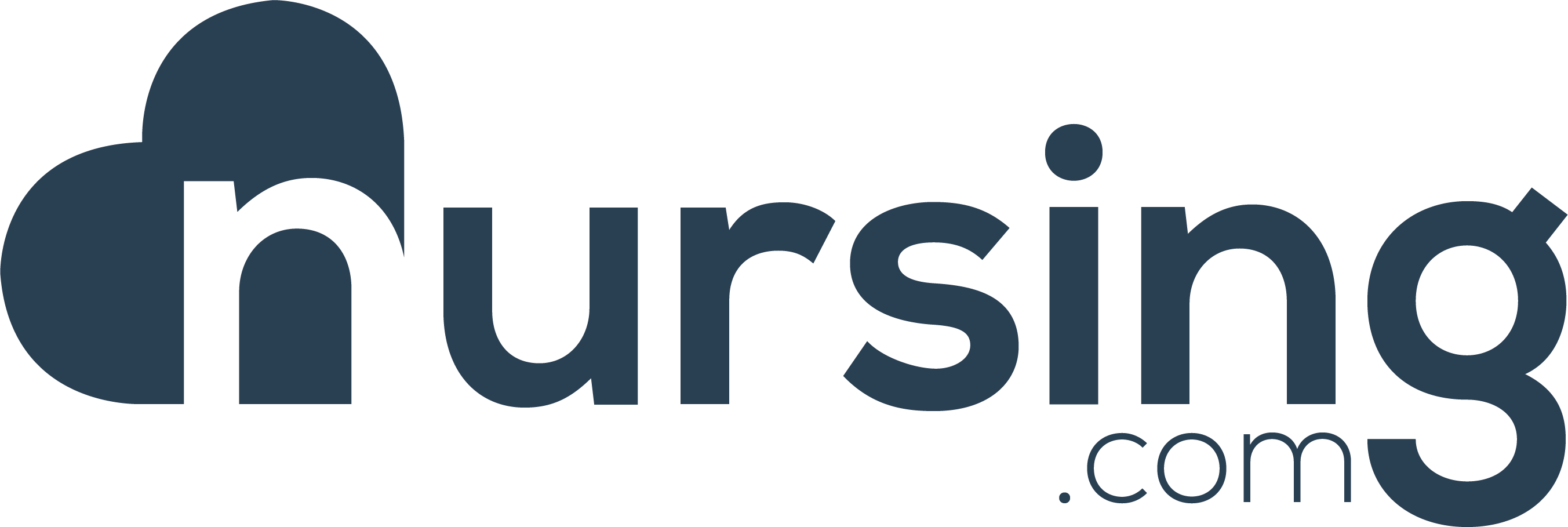
NCLEX Next Gen is proposed to go live April 2023. This is the proposed date as of 2022.
5 new question NCLEX question formats. See below.
News can be found here.
The NCSBN is responsible for determining safe practice of new nurses. One study found that 50% of new nurses were involved in practice errors.
The Next Gen NCLEX is an attempt to better gauge new nurse readiness for practice.
The Next Generation NCLEX (NGN) is a new and improved version of the NCLEX exam that is designed to better assess the critical thinking skills of nurses and help them make the right decisions when providing care. [2]
The NGN is intended for candidates who are seeking licensure as a registered nurse (RN) or licensed practical nurse (LPN). [1]
The NGN uses a new scoring methodology known as polytomous (partial credit) scoring. This means that candidates may receive partial credit for correct responses on items. In contrast, the current NCLEX exam scores each item as either all correct or all incorrect. [3]
Educators are encouraged to review the NGN test plan and familiarize themselves with the exam format, as well as the polytomous (partial credit) scoring methodology. Additionally, educators may participate in NGN educator beta testing, webinars and other resources provided by the National Council of State Boards of Nursing (NCSBN). [1]
The new NCLEX format will include 5 new question types including:
Extended Multiple Response
Extended Drag and Drop
Cloze (drop down)
Enhanced Hotspot
Matrix (grid)
***more info on these down below
These new question types will be used alongside "Case Studies" with each question building off the next in an effort to better evaluate clinical decision making in a "real-world" setting.
As a test taker, you will be given a case study and then be asked 6 questions based on the case study.
Each question will be based on what the NCSBN is calling the "Cognitive Aspects of Clinical Decision Making".
You will be asked one question PER cognitive aspect.
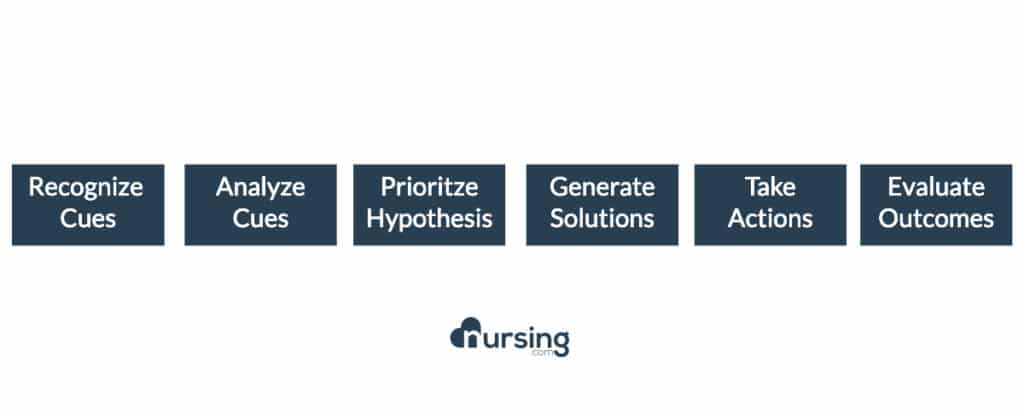
Does the above chart look familiar? It should.
Essentially, in the most simple terms, the Cognitive Aspects of Clinical Decision Making are a fancy way of referring to . . . .
The Nursing Process 👩🏾⚕️
So if you understand well the Nursing Process (assess, diagnose, plan, implement, evaluate) you will do just fine on this and I don't want you to worry about it.
To learn a bit more about where this all comes from, you can read more about the "Clinical Judgment Measurement Model" on the NCSBN site here: https://www.ncsbn.org/14798.htm
But again, I really don't think it is something you need to worry about too much to succeed on the Next Gen NCLEX.
Alrighty . . . so we know we are going to see case studies and we know what the questions are going to be based on, but what are they going to actually look like?
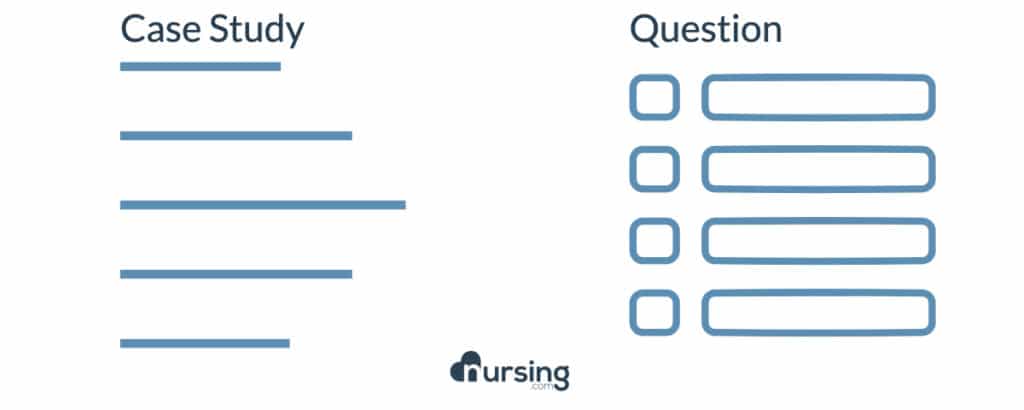
On the LEFT side of the screen, you will see the Case Study.
This is what the following 6 questions will be based on and will include things like patient charts, medical data, and other clinical information.
On the RIGHT side of the screen, you will see the questions to be answered.
These will be one of the above mentioned question types within one of the cognitive aspects.
Once you submit your answer - the next question will appear BASED ON THE SAME CASE STUDY.
As such, the left side of the screen will remain the same.
So let's dig into the new question types that will be associated with the new case studies on the NextGen NCLEX.
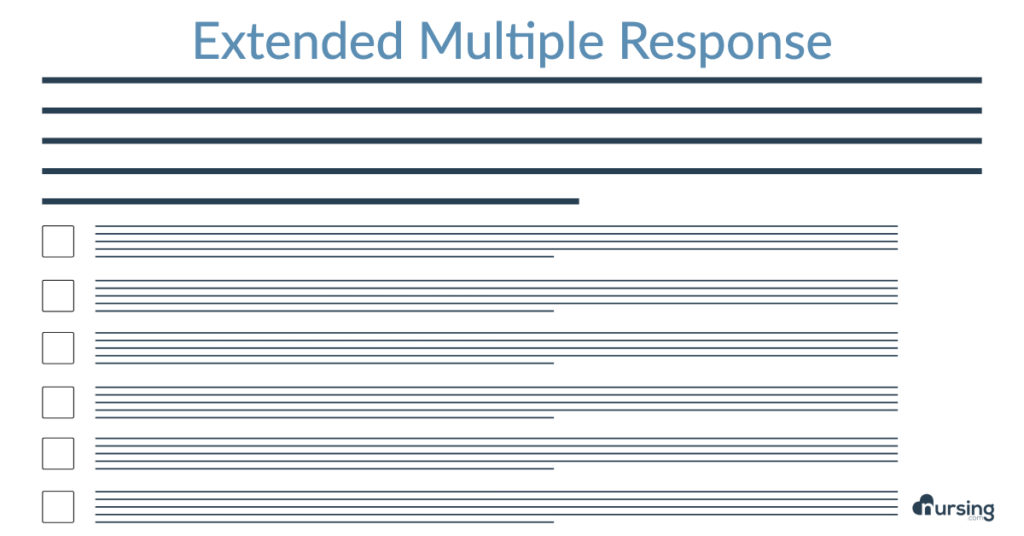
So basically you’re given a, a STEM or a question and you’re asked to select all the answers that all the items or all the answers that answer that question.
So they’re just adding a few more options to SATA questions. Now here’s the good thing . . . they’re planning to use partial credit scoring. So that’s huge.
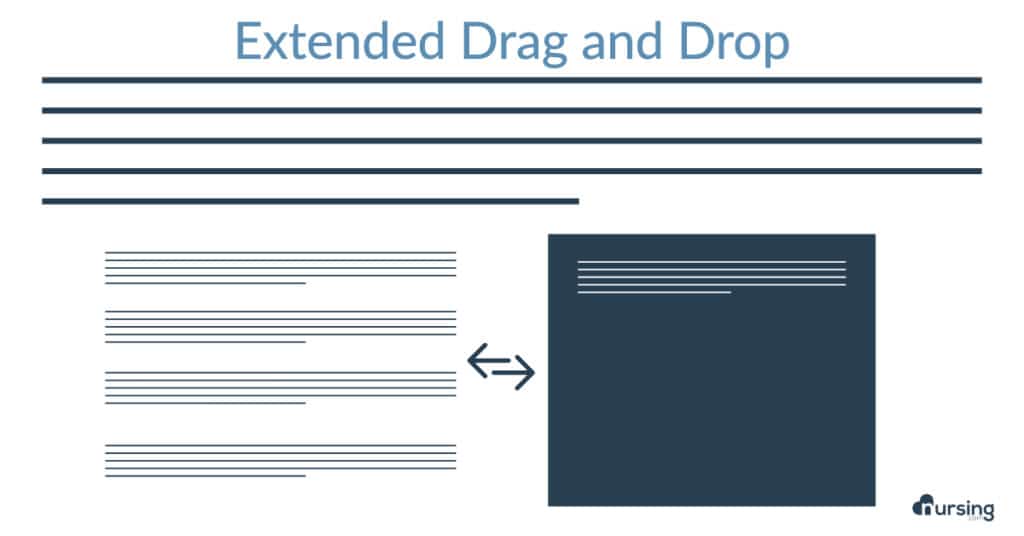
So extended drag and drop is an alternate format question type on the NCLEX. These extended drag and drops are different because not all of the options will be required to be used in the answer.
So it’s almost like a select all that apply, drag and drop. It’s really nothing more than that. It’s just that you’re dragging it over rather than clicking a button.
So in some cases, there might be more boxes available, than there are correct answers. And so you just have to select which ones actually apply to the patient for this new NCLEX question.
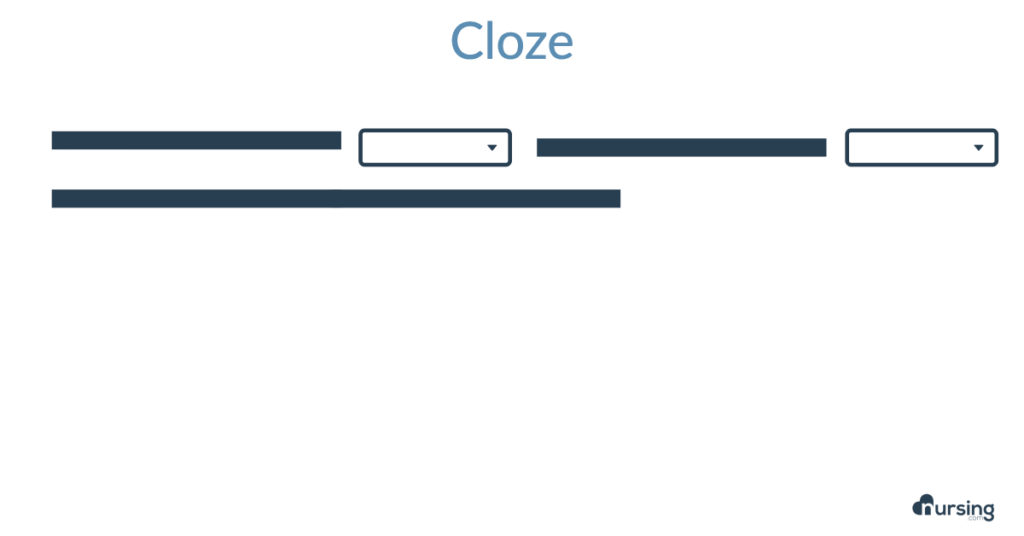
Given a sentence and it’s almost like a fill-in-the-blank, but instead of fill-in-the-blank, it’s a dropdown. So you’re given a sentence of the nurses evaluating a patient with pneumonia.
You hover over the first dropdown and you select your answer and then you hover over the second and you select your answer.
It’s truly nothing more than that.
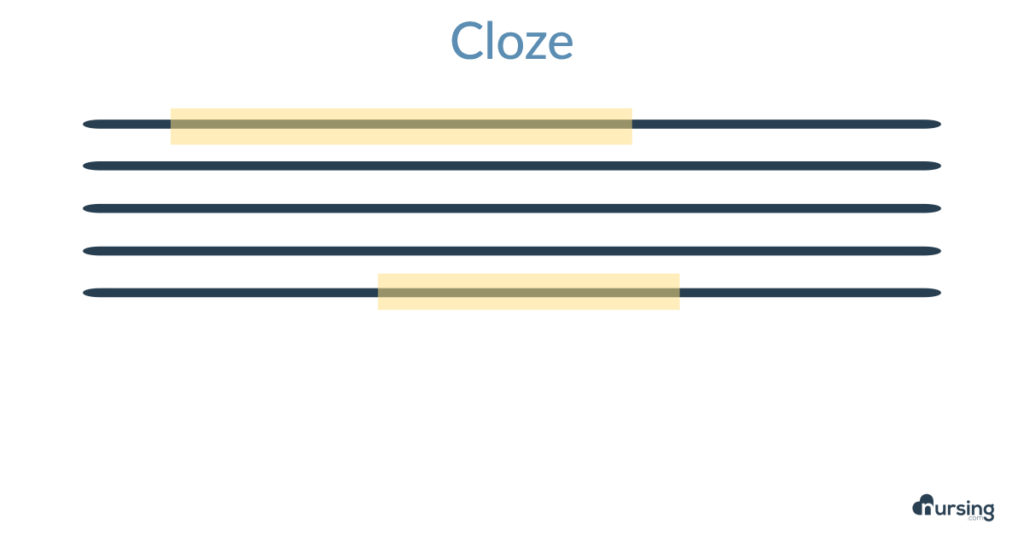
It’s just selecting the appropriate dropdowns in any given sentence or within tables on a chart.
So you’re given this report, this written report or a med chart or something like that, or a lab value and you have to select within there by like highlighting the phrase that requires the most immediate action. This is a great way to test nursing priorities.
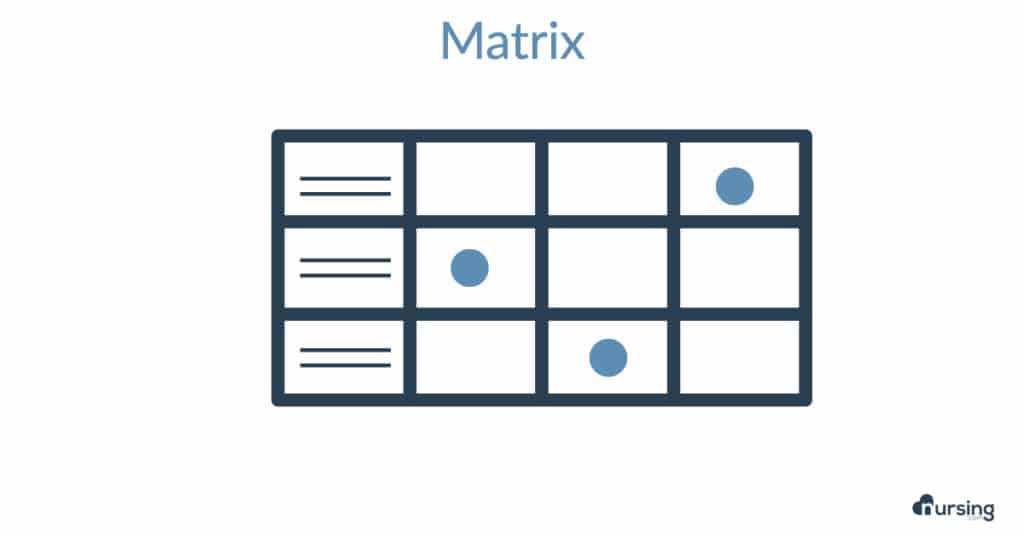
You’re going to see an Excel spreadsheet and you’ll have different columns. One column will be patient data or actions that the nurse would take. And then the other three columns will be or correct answer options. And you would have to select one of the columns for each of these rows.

This is an important question to ask.
While there are several new item (question) types being rolled out in 2023 - not every question you will see will be one of the new types.
What the NCSBN has stated is that the majority of the questions you will see are going to be the traditional question types:
Multiple Choice
SATA
Hot Spot
So you don't need to focus and stress too much about these new types but continue to focus on learning the material.
One important thing to know about Next Generation NCLEX is the fact that for the first time ever, the NCLEX items can be given partial credit - or - instead of being right or wrong they can be partially right or partially wrong.
Partial scoring will occur following a couple rules.

The best way to prepare for NEXTGen is to simply know the material. Memorizing facts won't work. NURSING.com provides you clear and concise lectures, questions, and study tools.
Practice over 6,000+ high yield NCLEX® style questions written by nurses who are NCSBN® trained question writers.
Simulate the NCLEX® with our patented computer adaptive SIMCLEX® which mimics the actual algorithms used on the NCLEX® exam.
99.86% of nursing students who pass a SIMCLEX® pass the NCLEX® on their first try, that's because SIMCLEX® simulates the actual computer adaptive algorithms the NCLEX® exam uses.
Our team of research analysts and NCSBN® trained question writers have spent years developing the astonishingly accurate patent-pending SIMCLEX®.
We are so confident, in fact, that if you pass a SIMCLEX® but do not pass the NCLEX® test, we will pay your back 200%! (review terms)
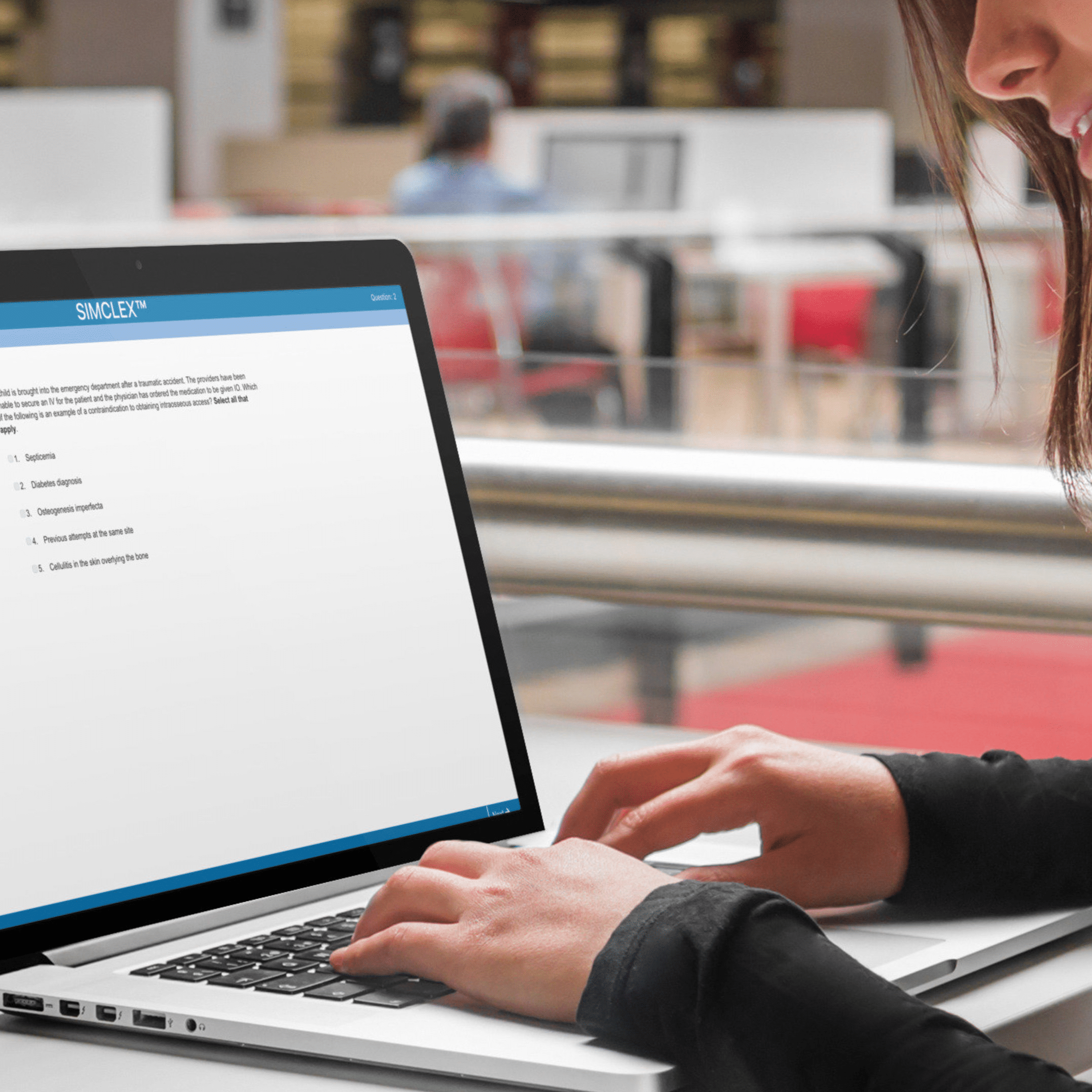
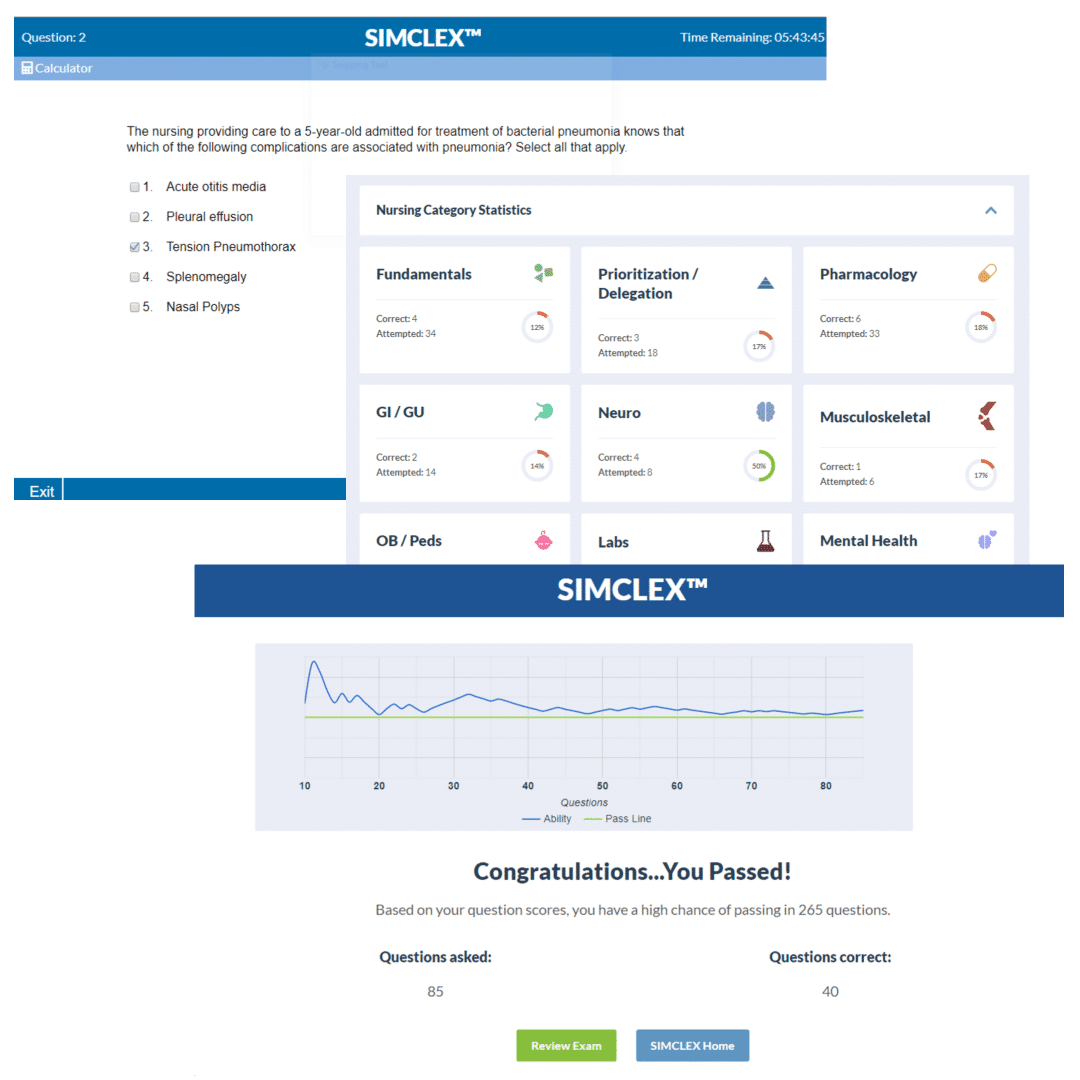
Easily review your weakest content areas with personalized study suggestions based on your SIMCLEX results.
The AI reviews your test performance and provides study suggestions catered just for you based on your 3 weakest areas on each exam.
Now you can go from testing to fully customized content review in seconds - no books, additional apps, or confusing stats. It's all right here!
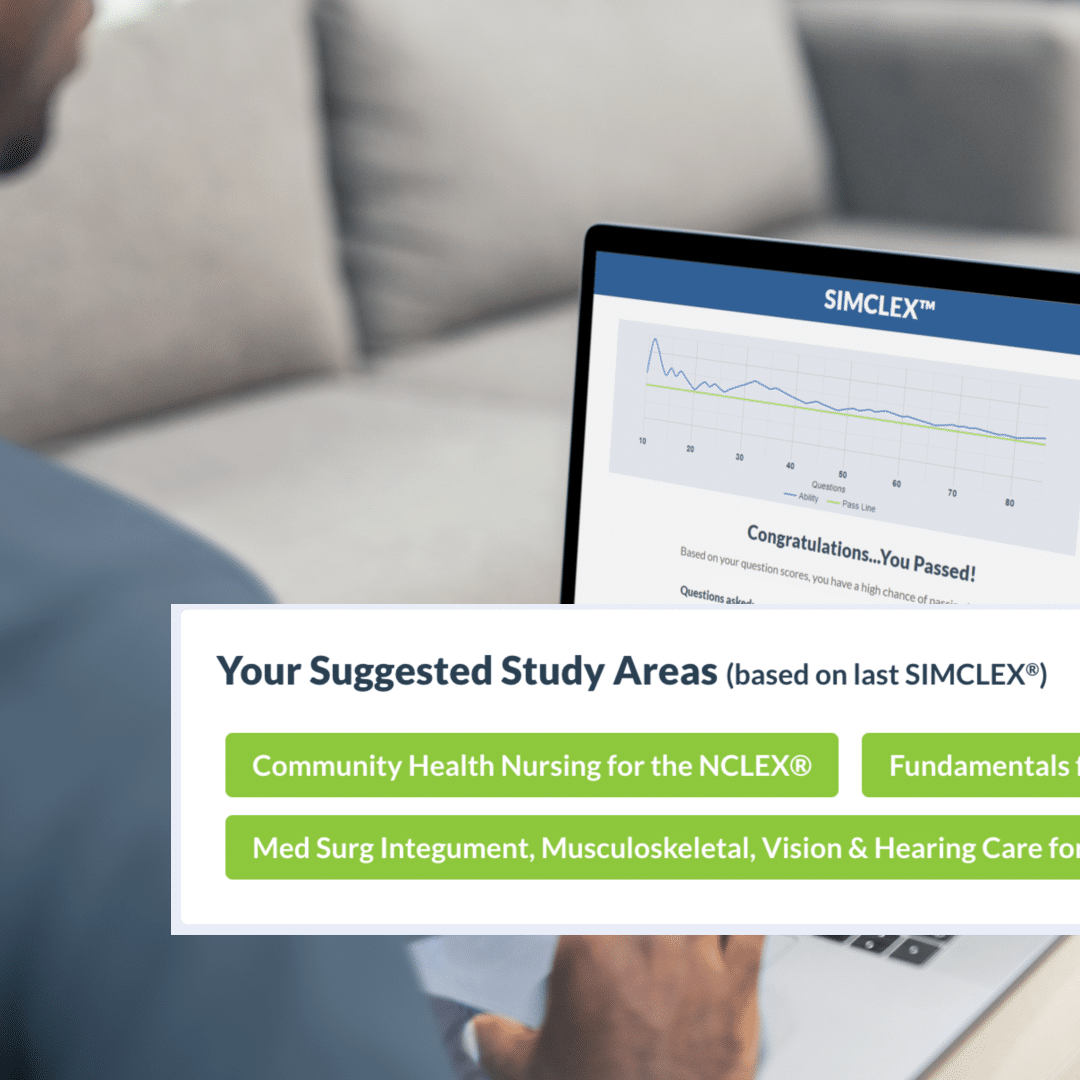
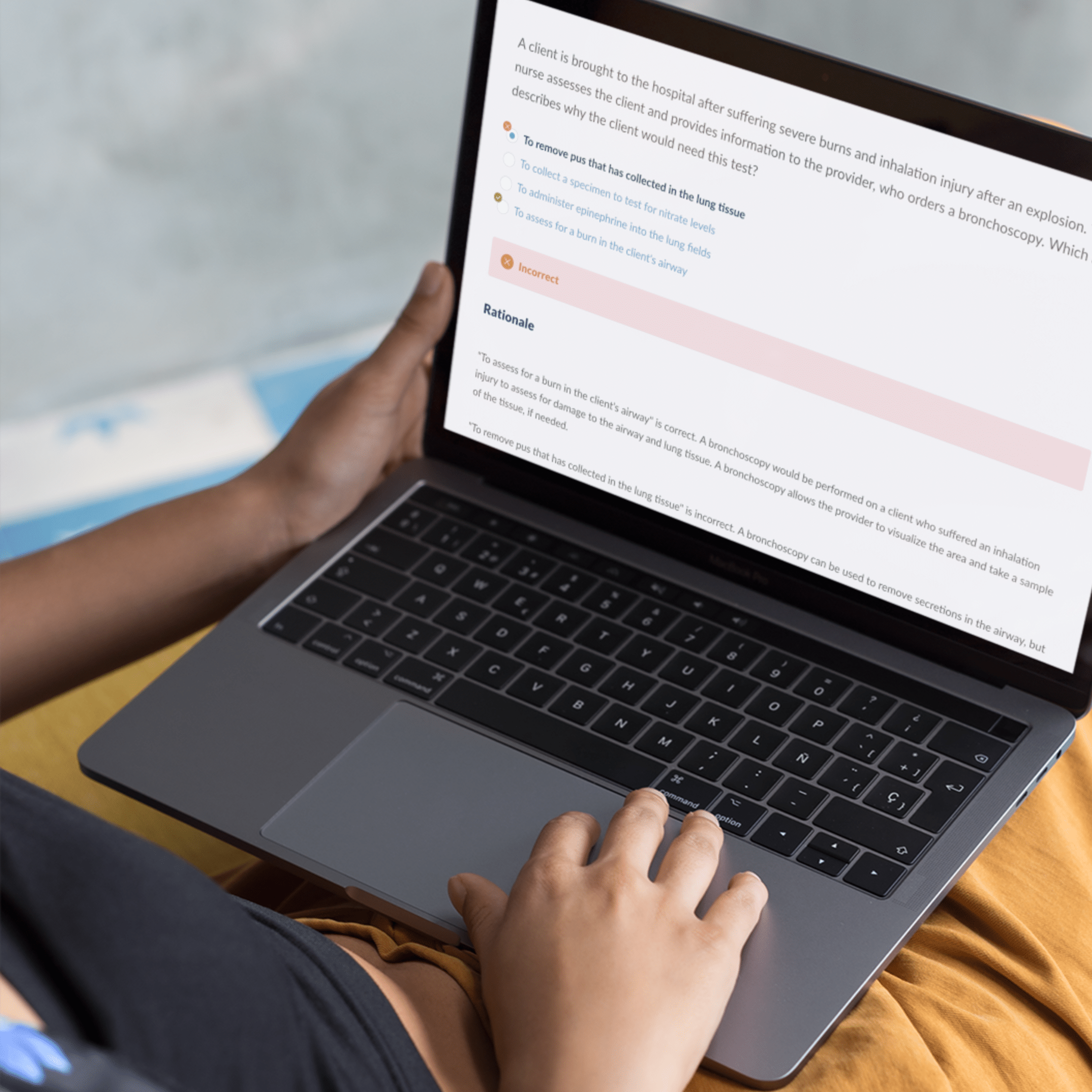
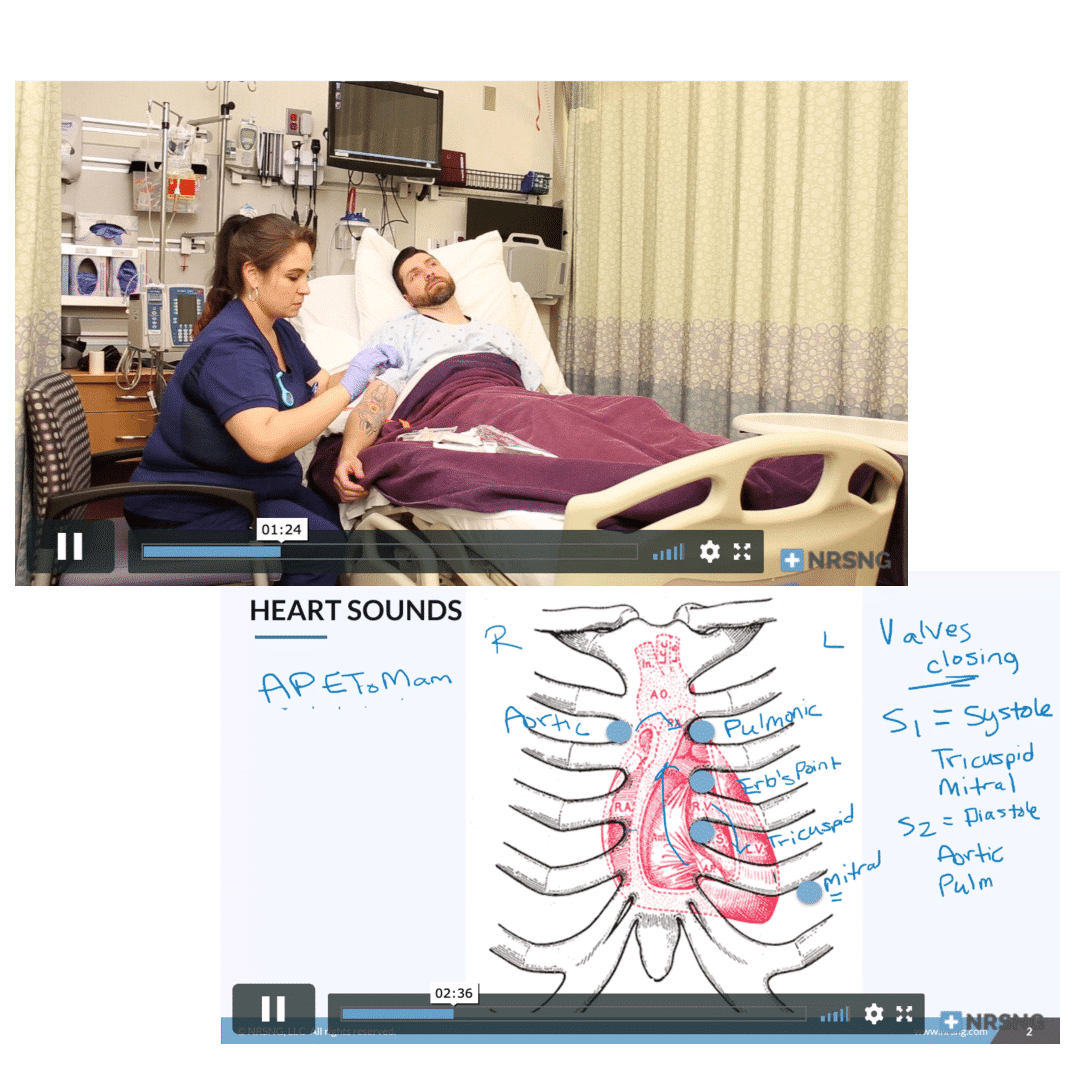
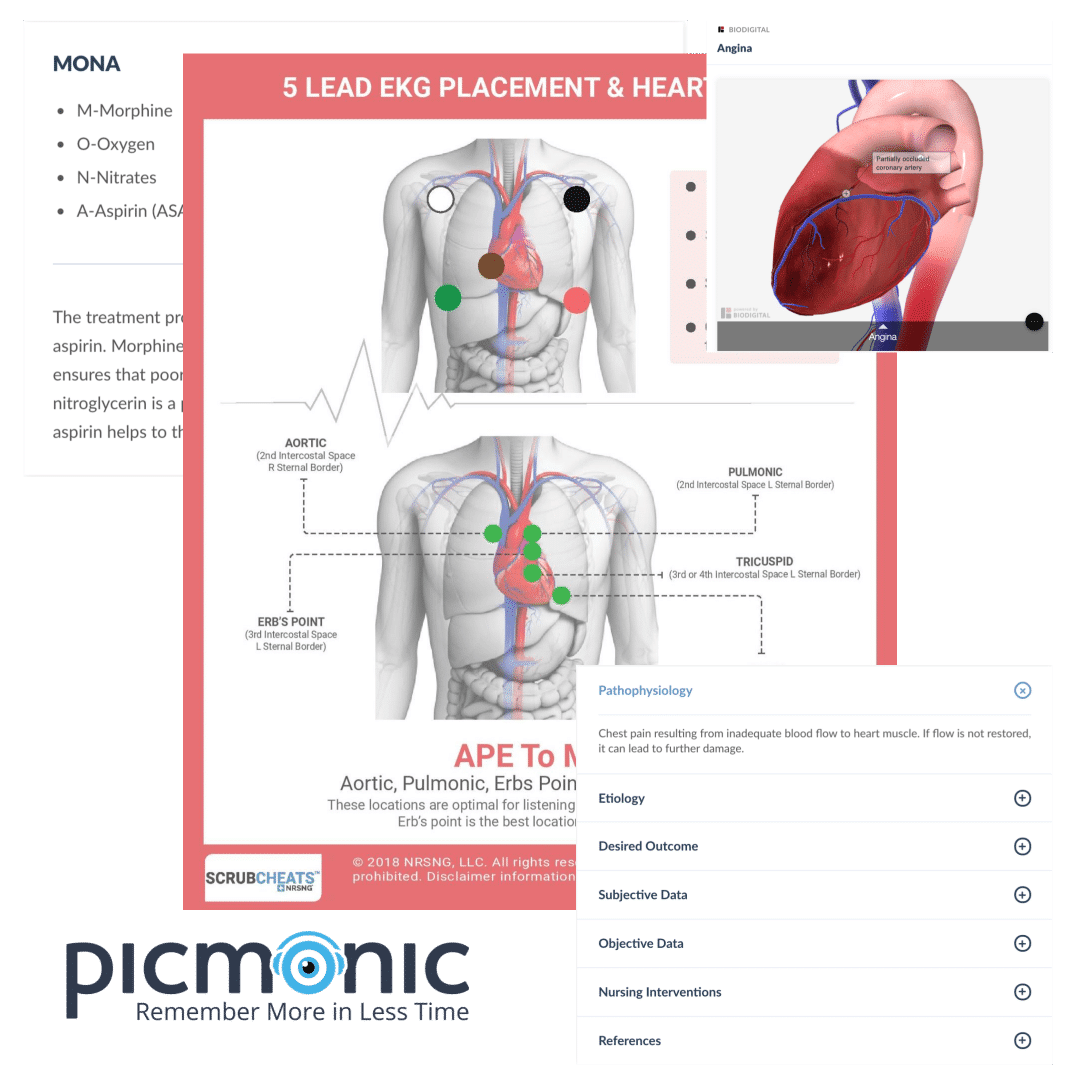




If you pass a SIMCLEX® and don’t pass the NCLEX ® we’ll give you a full refund… PLUS that same amount (review Terms of Use for full details).
